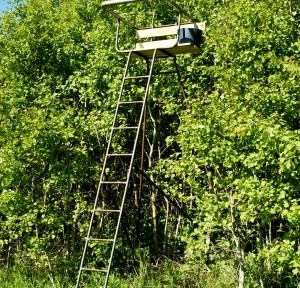Ah, the thrill of the hunt: the patience, the anticipation, the intensity, and the realness. The suppression of all of that emotion to achieve the calm necessary to aim properly and squeeze the trigger. It’s exciting, invigorating, humbling and peaceful all at the same time.
Unfortunately, as most avid hunters are already well aware, these are but fleeting moments. Much of the time spent hunting comes in the form of waiting, waiting, and waiting… and then waiting some more.
From the dawn of man, hunters have faced this very same dilemma. Regardless of whether we’re hunting woolly mammoths with a spear on the ancient Great Plains or giant corn-fed mule deer with a nice Savage Hunter XP in modern Nebraska, waiting was, is, and always will be main name of the game. I’d imagine that our ancestors had it worse. After all, they were sans those ever-so-entertaining and time-eating mobile handheld devices (e.g. smart phones, tablets). They were left to their own imaginations.
In this day and age, more than 85 percent of hunters go after bigger game like deer and elk, so the odds are pretty good that you spend most of that time waiting atop some sort of tree stand.
What this means is that our woods and grasslands are loading with hunters who are sitting multiple feet in the air, with a loaded rifle, totally bored, playing Candy Crush on their iPhones. Here’s why this is a scary thought: hunting can be dangerous. When done properly, hunting is as safe as baking pie. The problem is that sadly not everybody hunts properly and hunting accidents DO happen.
Now, before you fall back on that annoying yet prevailing stereotype that says that most hunting injuries are gunshot wounds perpetrated by stupid, drunk hunting buddies, check this out:
Researchers in the Midwest conducted a study wherein trauma databases of two Level I trauma centers were queried for all hunting related injuries over a decade-long period. It states that “one hundred and thirty patients were identified (90% male, mean age 41.0 years, range 17-76). 50% of injuries resulted from falls, whereas gunshot wounds accounted for 29%. Most hunters were hunting deer and 92% of falls were from tree stands. Alcohol was involved in only 2.3% of the time. Of gunshots, 58% were self-inflicted, and 42 per cent were shot by another hunter. Tree stand falls were highly morbid, with 59% of fall victims suffering spinal fractures, 47% lower extremity fractures, 18% upper extremity fractures, and 18% closed head injuries. Surgery was required for 81% of fall-related injuries, and 8.2% of fall victims had permanent neurological deficits.”
To help you cut through the clutter this simply states that despite what you might have thought, tree-stand falls are the “most common mechanism” of catastrophic hunting related injuries. While this study was conducted in a specific geographic area, it would not be too far of a stretch to apply these numbers to the rest of the U.S.
The best solution to this problem is to simply pay attention when you are up in a tree stand. It’s fine to pass a little time playing some games here and there, but it is important to look up once in a while and take note of your surroundings. Make sure you’re still strapped in well. Make sure your tree stand footings are still secure. It’s little things like this that can save you from spending a hunting season on the mend… or worse.
